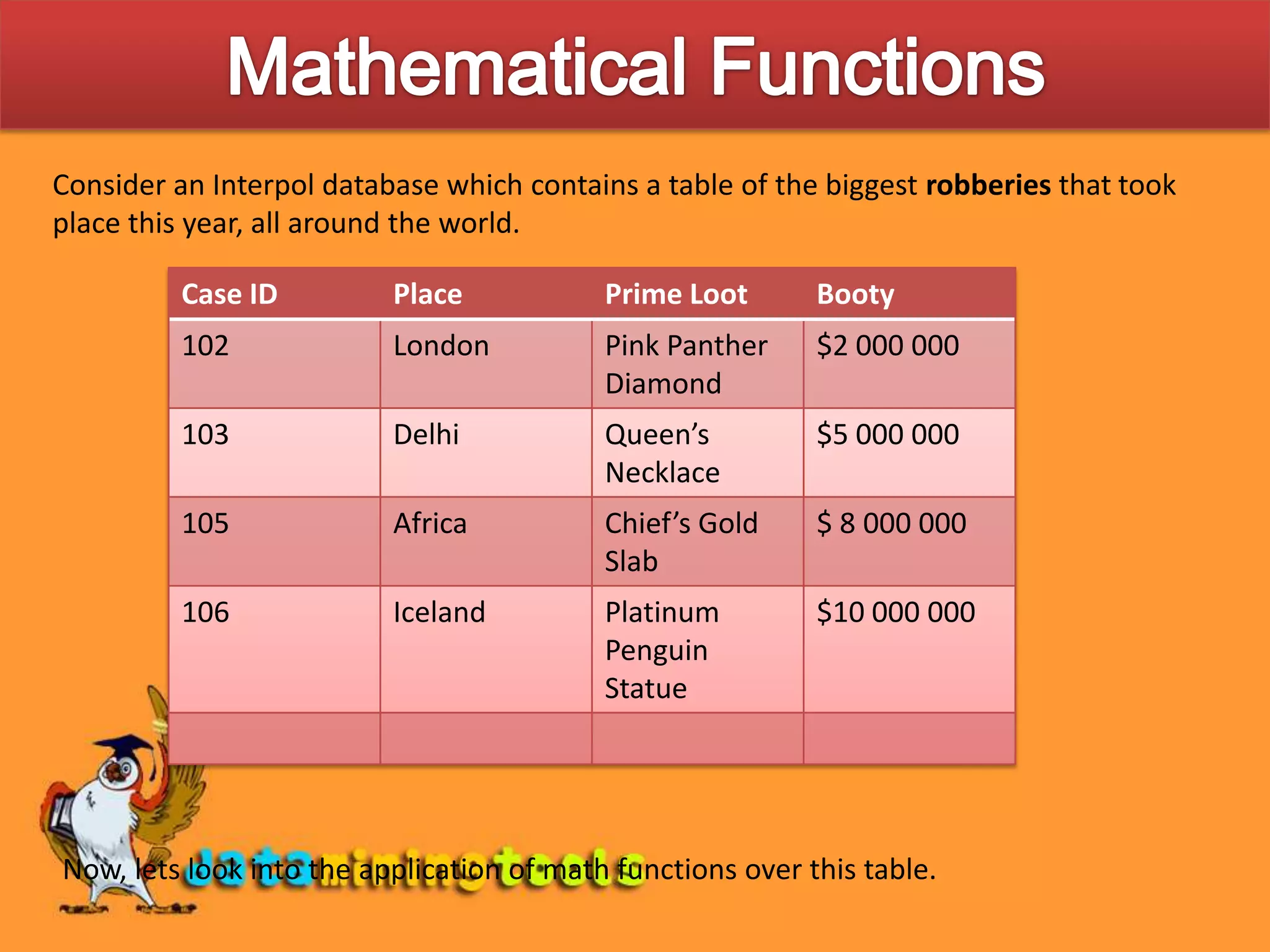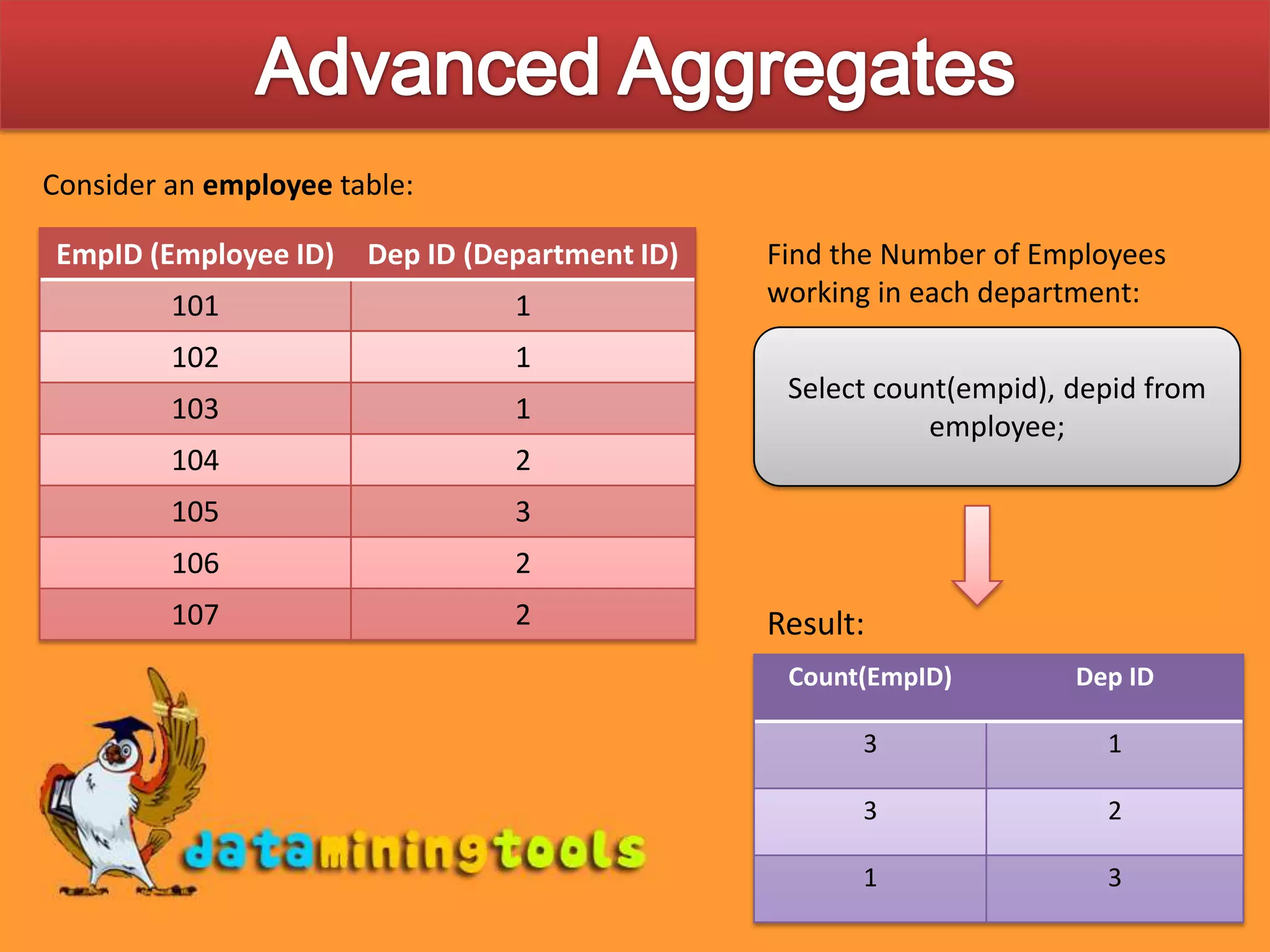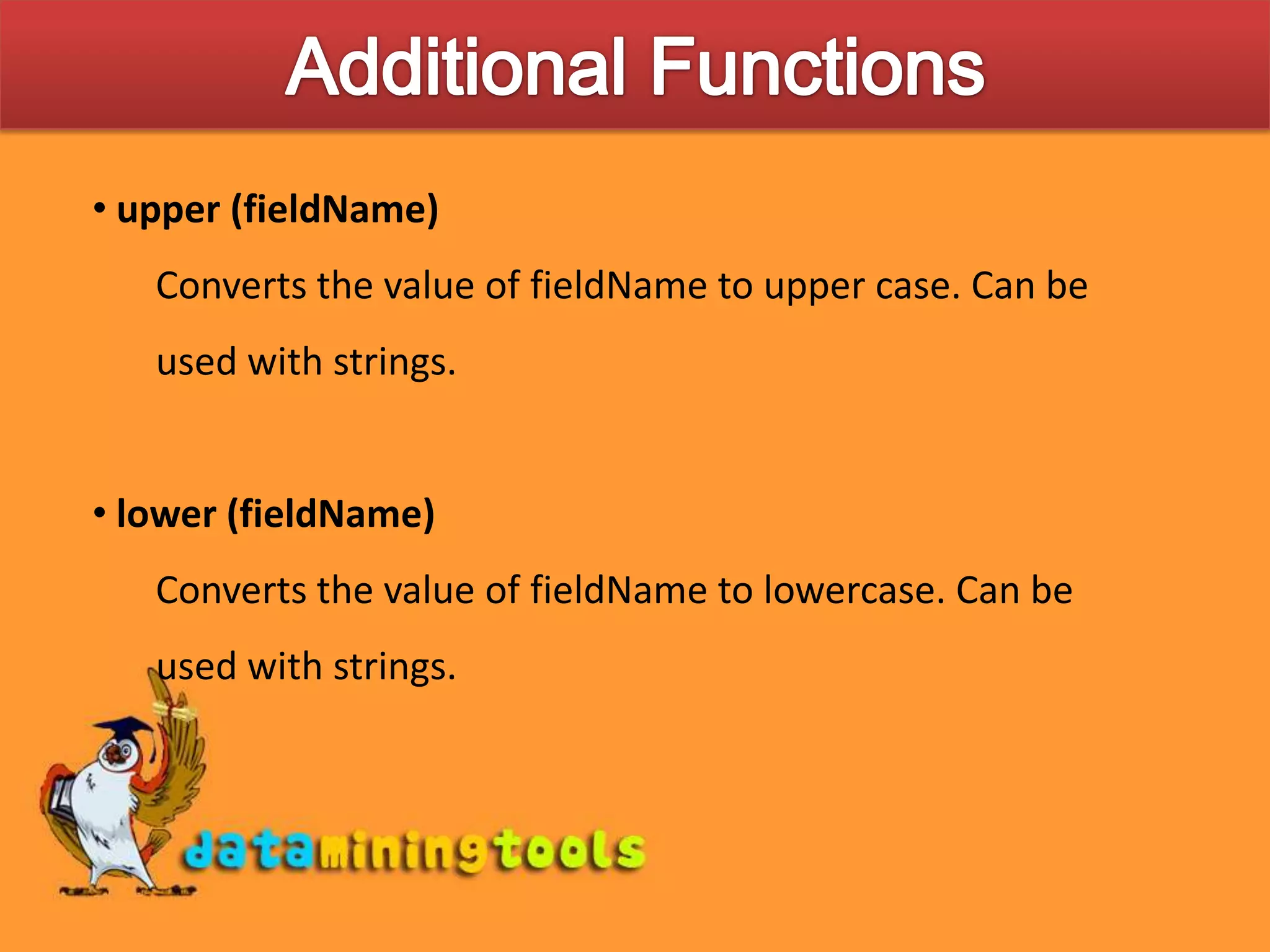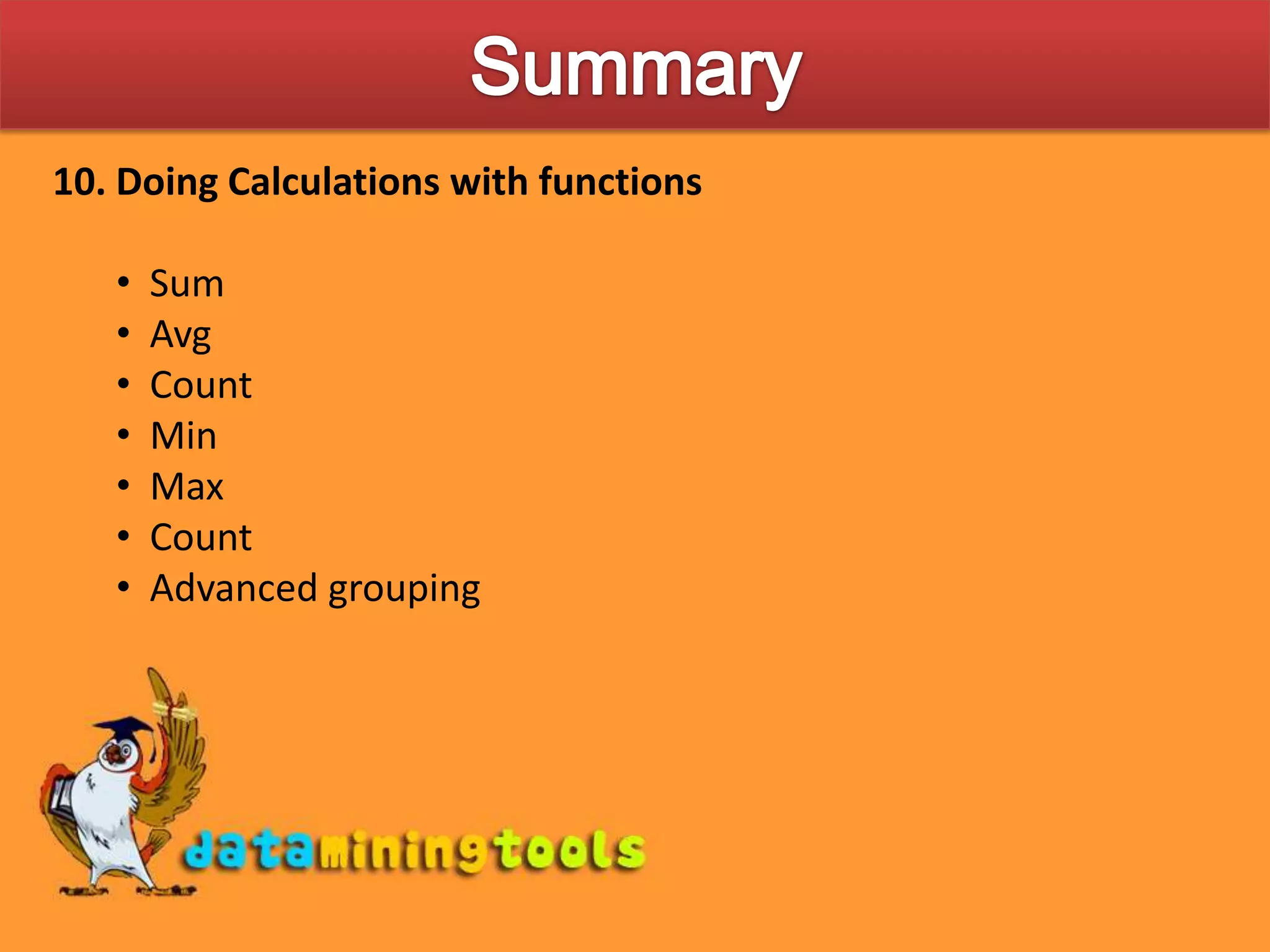This document discusses mathematical functions in SQL Server that can perform calculations on columns in tables. It explains aggregate functions like SUM, AVG, MIN, MAX, and COUNT that calculate the total, average, minimum, maximum, and count of values. These functions can be used to find calculations on a single column or combined with GROUP BY to calculate aggregates for each group. Additional functions like UPPER and LOWER can manipulate string values. Examples demonstrate finding total booty, average booty, highest/lowest booty, and robbery case count from a robberies table using these functions.









